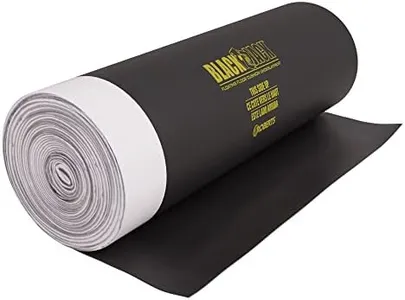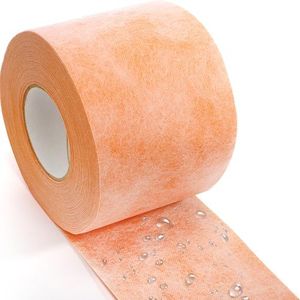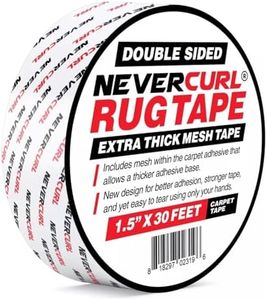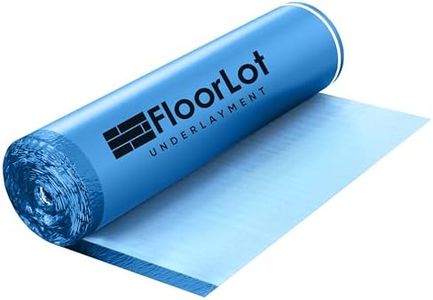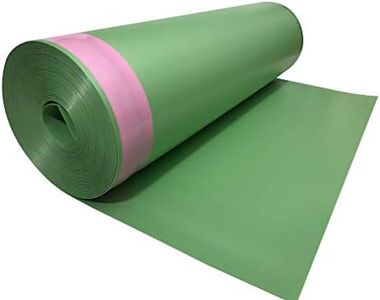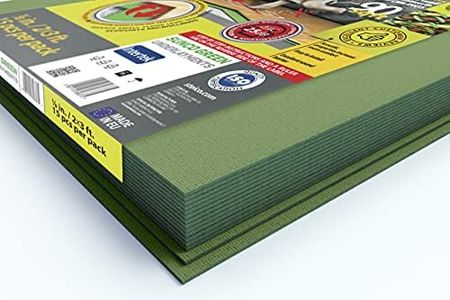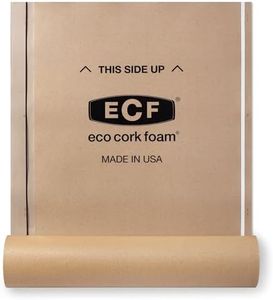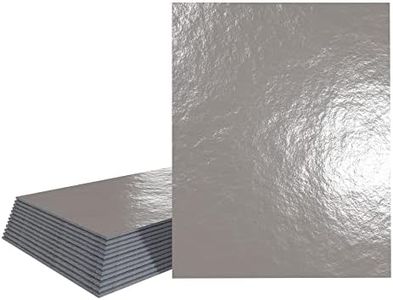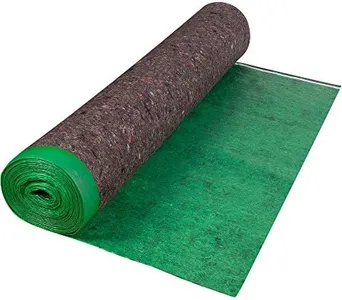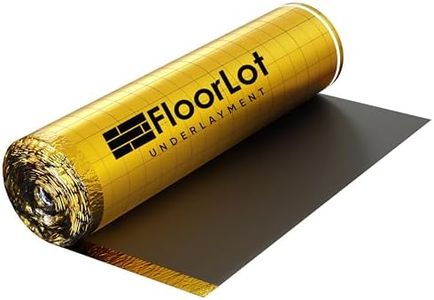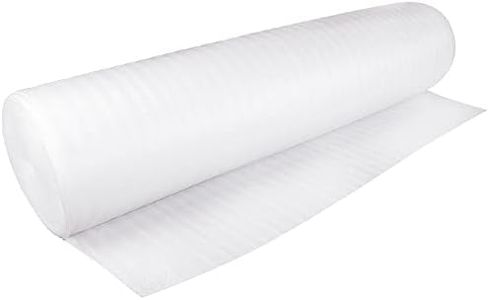10 Best Acoustic Underlayments 2025 in the United States
Our technology thoroughly searches through the online shopping world, reviewing hundreds of sites. We then process and analyze this information, updating in real-time to bring you the latest top-rated products. This way, you always get the best and most current options available.

Our Top Picks
Winner
ROBERTS Black Jack Underlayment - 600 sq. ft. Roll - 43" x 167.5' x 2.5 mm
Most important from
811 reviews
The Roberts Black Jack Underlayment is designed primarily for use under laminate and engineered wood floors, offering a large 600 sq. ft. roll that makes it a cost-effective choice for bigger projects. It stands out with strong sound-blocking capabilities, featuring an IIC rating of 70 and an STC rating of 66, which means it effectively reduces noise from impacts and airborne sounds—important if you want quieter floors. At 2.5 mm thick, it also adds cushioning for more comfort underfoot and works well with radiant heated floors, which is a nice plus.
Installation is straightforward thanks to the plastic overlap and adhesive strip, making it a favorite among professional installers. The underlayment is relatively thin at just under a tenth of an inch, so while it improves sound and comfort, it might not provide the highest insulation or moisture barrier compared to thicker or specialized options.
With mostly positive reviews and a strong reputation, this underlayment suits homeowners looking for a reliable, easy-to-install sound reduction layer for their laminate or engineered floors, especially in dry environments without extreme moisture concerns.
Most important from
811 reviews
360 Sq Ft Acoustical Underlayment with Vapor Barrier for Luxury Vinyl Flooring
Most important from
410 reviews
The QuietWalk LV Luxury Vinyl, Laminate, or Wood Underlayment is designed to provide excellent sound reduction, making it a suitable choice for anyone looking to minimize noise transmission between rooms. It uses recycled synthetic fibers, which help absorb sound effectively and ensure a solid feel underfoot for floating floors. This underlayment is also compression-resistant, meaning it will maintain its structure even under consistent foot traffic, which is beneficial for the longevity of your floors.
The integrated DriWick technology ensures moisture protection by allowing concrete subfloors to breathe and preventing moisture from damaging your flooring. Additionally, it comes with a vapor barrier, adding an extra layer of protection against moisture. This product is compatible with a variety of installation methods, including floating, glue-down, and nail-down, and it’s suitable for several types of flooring, such as luxury vinyl, laminate, and wood floors. It's also certified for clean indoor air quality with no VOC emissions, which is a significant plus for health-conscious users.
Another advantage is its compatibility with in-floor radiant heat systems, ensuring that heat permeates evenly and protecting the floor from thermal shock. The underlayment covers 360 square feet per roll, making it a cost-effective option for larger projects. On the downside, the thickness of 0.06 inches might be less than what some users are looking for in terms of cushioning.
Most important from
410 reviews
Manton Cork Premium Cork Roll - 4' x 25' x 1/4", 100% Natural Facing Grade Material for Bulletin Boards, Decorative Photo and Message Push Pin Displays - Perfect for Home, School, and Office
Most important from
225 reviews
The Manton Cork Premium Cork Roll is a versatile product primarily designed for bulletin boards and decorative displays, but it offers several benefits that align with the needs of acoustic underlayments. Made from 100% natural cork, the material is sustainable and eco-friendly, which is great for environmentally conscious consumers. The cork material is known for its acoustic properties, providing some sound insulation benefits. It also offers thermal insulation, making it useful in both cold and hot climates.
The roll is 1/4” thick, which is decent for a variety of applications but may not be the best for high-impact sound insulation without additional layers or materials. The product is easy to cut and install, which is a plus for DIY enthusiasts or those looking to quickly update their space. However, the cork roll’s primary function is for decorative use rather than as an underlayment, so the density and moisture resistance are not specifically optimized for flooring applications.
Weighing 22 pounds and sized at 4' x 25', it’s substantial enough for medium to large projects. This product is best suited for those looking to create pin-up areas or add decorative elements with some added acoustic and thermal benefits, but it may not be the top choice for those needing robust flooring underlayment solutions.
Most important from
225 reviews
Buying Guide for the Best Acoustic Underlayments
Choosing the right acoustic underlayment is crucial for ensuring that your space remains quiet and comfortable. Acoustic underlayments are materials placed beneath flooring to reduce noise transmission and improve sound insulation. When selecting an acoustic underlayment, consider the type of flooring you have, the level of noise reduction you need, and the specific requirements of your space. Understanding the key specifications will help you make an informed decision that best suits your needs.FAQ
Most Popular Categories Right Now
